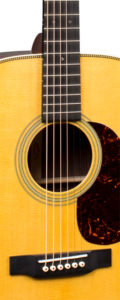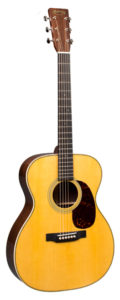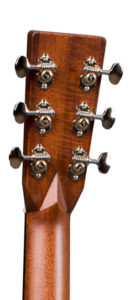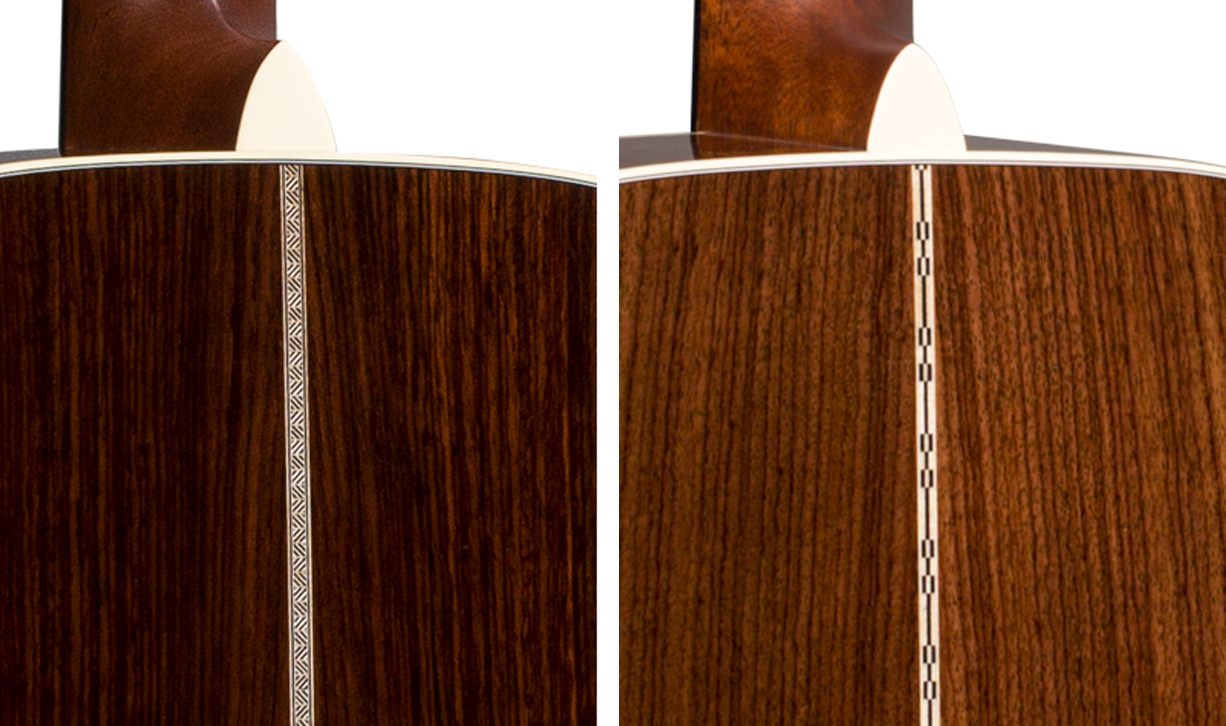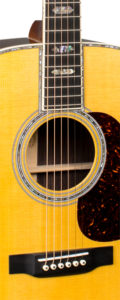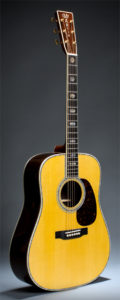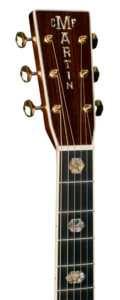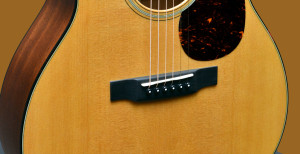New Martins for a New Decade
Limited Edition D-18E 2020 and the latest, greatest Aura Blend electronics highlight Martin’s Winter NAMM 2020 Offerings
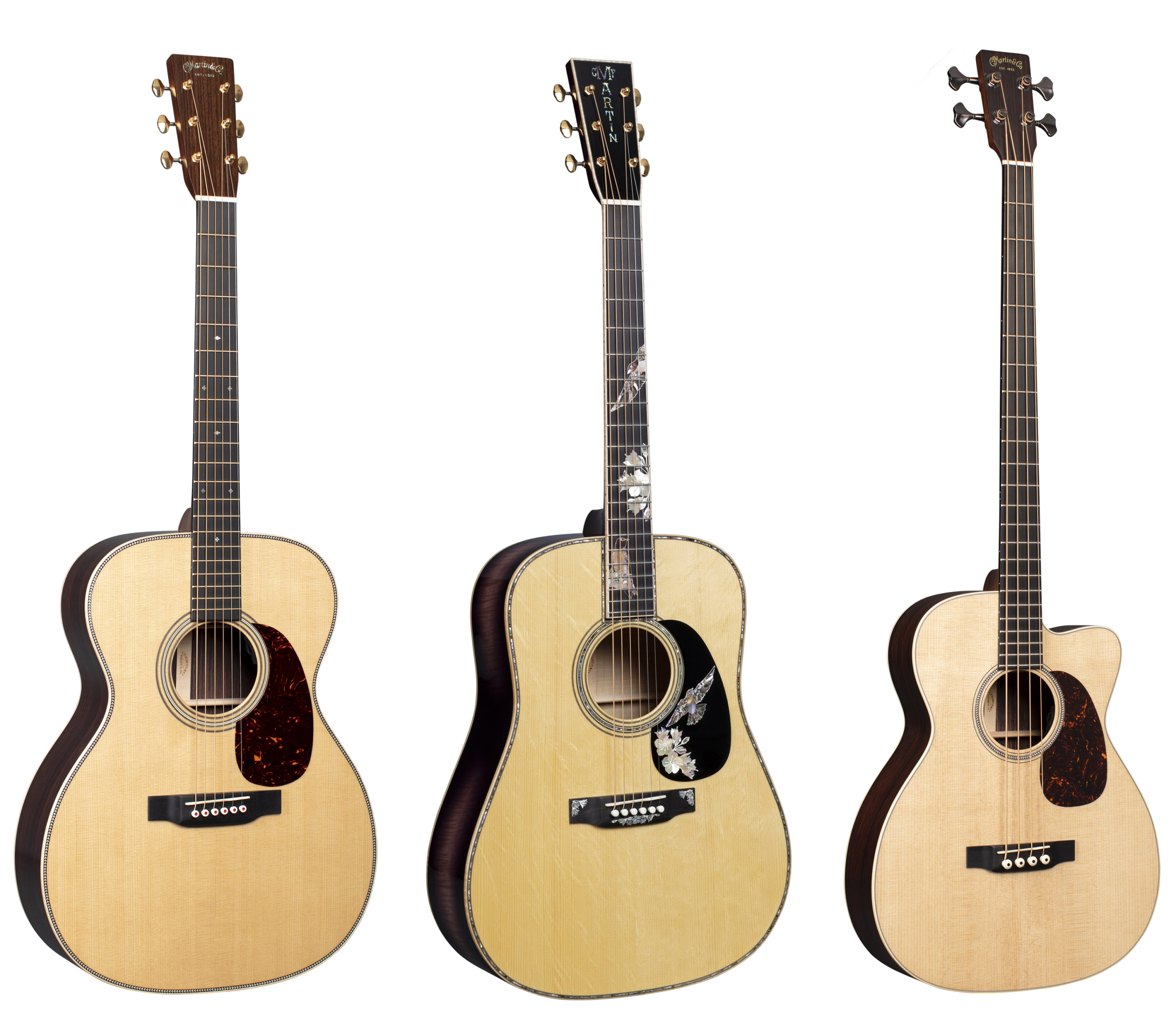
A year ago Martin debuted their Modern Deluxe Series with four new models that employ cutting-edge technologies to create light-weight acoustic guitars that feel and play a lot like vintage Martins, with unique and impressive tone all their own. Today they unveiled the acoustic-electric versions of those same models, the D-28E Modern Deluxe, D-18E Modern Deluxe, OM-28E Modern Deluxe, and 000-28E Modern Deluxe.
I’ve had to keep my trap shut for half a year about the new Hi-Def generation of Fishman’s Aura electronics, ever since the power that is C. F. Martin IV decided to not to release the acoustic-electric versions of the Martin’s Modern Deluxe Series until Winter NAMM 2020.
But now they are out of the bag and I can tell you this is one of the most exciting upgrades in a long while when it comes to live acoustic tone via a plugged-in guitar.
At the heart of the new Aura VT Blend system is the amazing and highly-complex algorithm that is the adjusts in real time to whatever and however a guitarist is playing the instrument, and the proprietary tone-sculpting effects that work together to make the plugged-in tone sound much more like the actual acoustic instrument as heard through a world-class microphone.
Their are two parts to why this new version of the Aura technology is an improvement over the one that is currently in use on other Martin models. First, there is the greater detail and definition to the overall amplified voice. But perhaps best of all, the new Aura Blend system includes the ability to control how much of the Aura filters are applied to the direct signal from the Fishman undersaddle pickup. So, in addition to the VT volume and general tone control, the player blends in the amount of the onboard Aura microphone image they like best, depending upon the sound system, room, or purpose.
It has been a while, so I went looking for my notes from last year and can’t find them. So, I returned to the source, and asked Tim Teel, Instrument Design Manager at C. F. Martin & Co., what is his current take on the new Modern Deluxe models with the latest, greatest Fishman Aura VT Blend system.
“I thought it was very important to marry this new incredible sounding Aura VT Blend system to what I consider is our best sounding series; Modern Deluxe.
The new Aura VT Blend starting in 2020 on the Modern Deluxe series is the next evolution regrading pro-level sound reinforcement for the acoustic guitar. Full blend control between under-saddle piezo pickup and Aura microphone image has been given back to the player!
In a live setting, 40-60% Aura Image is more than enough, and when plugged directly into a computer for recording, up to 100% of Aura image can be utilized. Also, new for this release is Aura HD Imaging, giving stunning realism to the sound of the guitar when played through an amplifier or direct recording. A volume and multi-effect EQ scoop round out the user controls located conveniently in the sound hole of the guitar.
I encourage folks to give it a test play at their local dealer.
And I shall be testing them out in the now public version next Thursday, on the very day they are released at Winter NAMM.
Here is a quick overview of many of the new Martins debuting next week.
C. F. Martin & Co.® (Martin®) will introduce a suite of upgraded X Series guitars, a new 12-fret nylon string guitar, a new acoustic bass guitar, new 16 Series models, new Modern Deluxe Series models with electronics, a limited edition D-18E 2020, and the fourth in a series of exquisite Purple Martin models at Winter NAMM in Anaheim, California, January 16-19, 2020.
D-18E 2020
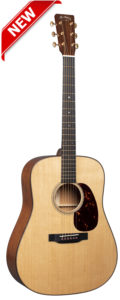 The D-18E 2020 is a limited edition version of the historic 14-fret D-18, which officially joined Martin’s lineup in 1934. Like its namesake, the D-18E 2020 is constructed with a Sitka spruce top and genuine mahogany back and sides plus all of the Standard Series elements that, combined, offer supreme playability and legendary Martin tone. What sets it apart is the use of exquisite East Indian rosewood for the headplate, fingerboard, binding, bridge, and heelcap. The D-18E 2020 comes stage-ready with LR Baggs Anthem electronics. The guitar is strung with Martin Authentic Acoustic Lifespan® 2.0 strings, and it is limited to 2,020 instruments.
The D-18E 2020 is a limited edition version of the historic 14-fret D-18, which officially joined Martin’s lineup in 1934. Like its namesake, the D-18E 2020 is constructed with a Sitka spruce top and genuine mahogany back and sides plus all of the Standard Series elements that, combined, offer supreme playability and legendary Martin tone. What sets it apart is the use of exquisite East Indian rosewood for the headplate, fingerboard, binding, bridge, and heelcap. The D-18E 2020 comes stage-ready with LR Baggs Anthem electronics. The guitar is strung with Martin Authentic Acoustic Lifespan® 2.0 strings, and it is limited to 2,020 instruments.
List price $3,649
D-42 Purple Martin Flamed Myrtle
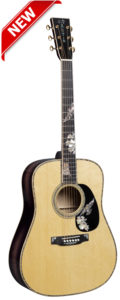 The D-42 Purple Martin Flamed Myrtle is the fourth instrument in the Purple Martin Series. The “Purple Martin” theme is inspired by a native bird of Pennsylvania, where Martin Guitar’s headquarters and factory are located. Limited to 100 instruments, this head-turning model includes 42-style pearl inlay throughout and highly decorative inlay on the fingerboard and pickguard of the purple martin bird and mountain laurel flowers, the state flower of Pennsylvania. It is a full-gloss guitar with a heavy bearclaw Engelmann spruce top with a deep purple burst and stunning flamed myrtle back and sides. Each model includes a label signed by C. F. Martin & Company Chairman and CEO Chris Martin. The D-42 Purple Martin is strung with Martin Authentic Acoustic Lifespan® 2.0 strings.
The D-42 Purple Martin Flamed Myrtle is the fourth instrument in the Purple Martin Series. The “Purple Martin” theme is inspired by a native bird of Pennsylvania, where Martin Guitar’s headquarters and factory are located. Limited to 100 instruments, this head-turning model includes 42-style pearl inlay throughout and highly decorative inlay on the fingerboard and pickguard of the purple martin bird and mountain laurel flowers, the state flower of Pennsylvania. It is a full-gloss guitar with a heavy bearclaw Engelmann spruce top with a deep purple burst and stunning flamed myrtle back and sides. Each model includes a label signed by C. F. Martin & Company Chairman and CEO Chris Martin. The D-42 Purple Martin is strung with Martin Authentic Acoustic Lifespan® 2.0 strings.
List price $14,999
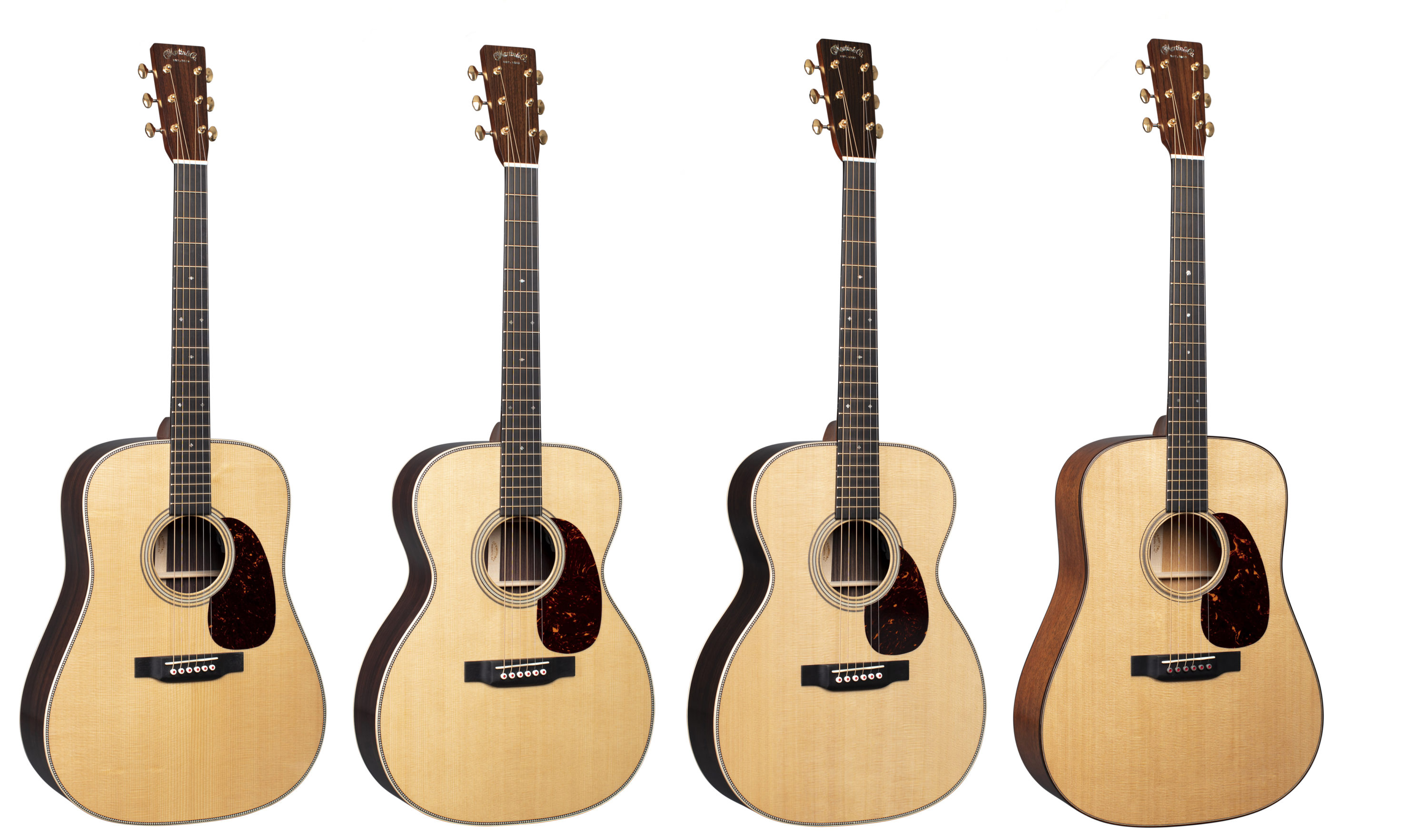
The award-winning Modern Deluxe Series was introduced at Winter NAMM 2019, and Martin has received universal praise for marrying vintage appointments, like a VTS top, and modern upgrades, like a titanium truss rod. This year, Martin has added all-new Fishman® Aura® VT Blend electronics to offer players more control over the voice of the guitar than ever before. It utilizes Aura HD Imaging to provide stunning realism and delivers a new level of performance for direct recording in live situations. The stage-ready Modern Deluxe Series with electronics is offered in four models—the D-28E, 000-28E, OM-28E, and D-18E—and all are strung with Martin Authentic Acoustic Lifespan® 2.0 strings.
List prices range from $4,999 – $5,799
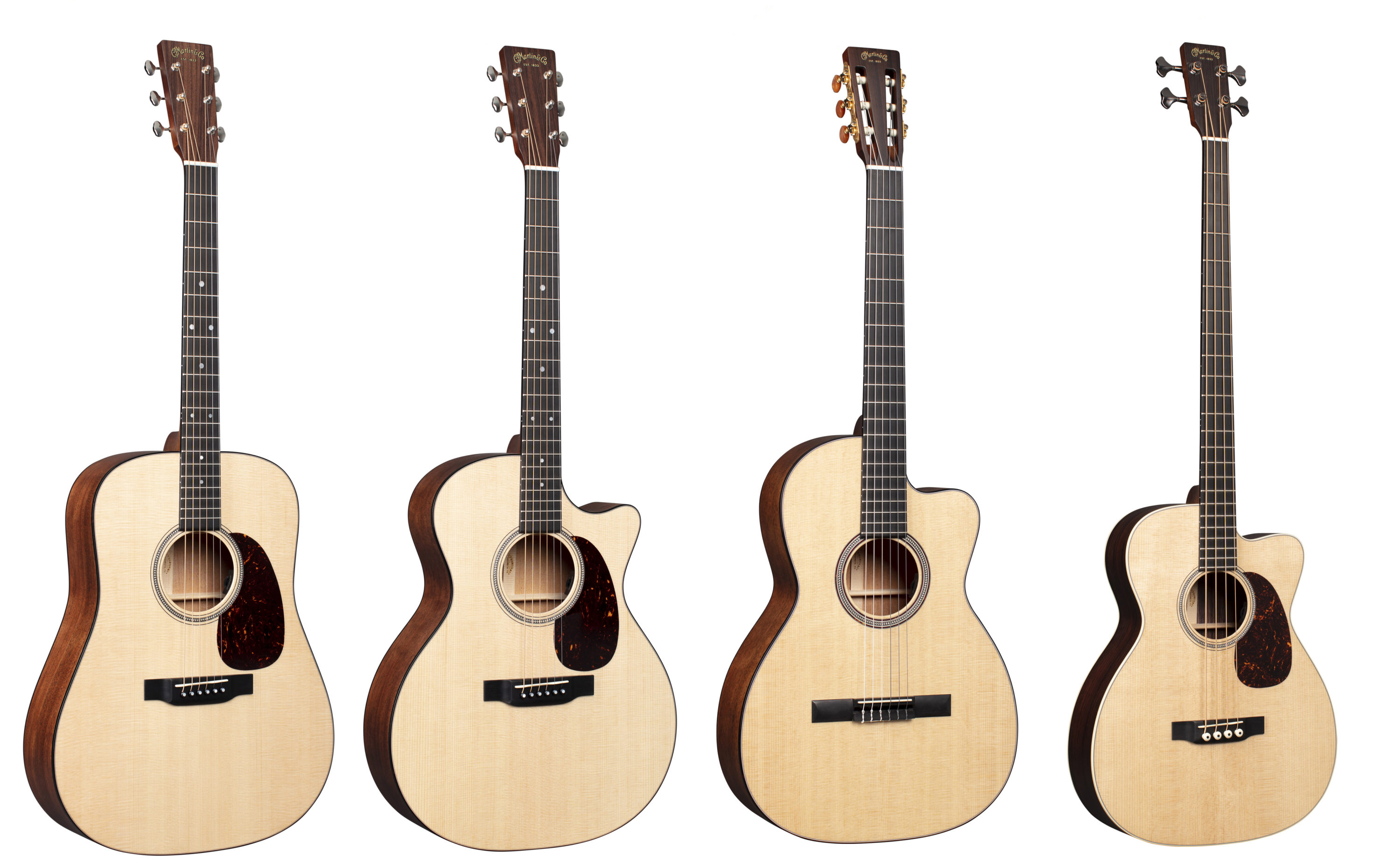
D-16E Mahogany
The Martin D-16E Dreadnought is crafted with satin-finished mahogany back and sides for a big sound, punchy midrange, and bright treble response. It include a Sitka spruce gloss top for balanced tone and projection and a 000 body depth and high-performance neck taper for comfort and ease of playability. It comes equipped with Fishman® Matrix VT Enhance™ electronics and Martin Authentic Acoustic Lifespan® 2.0 strings.
List price $2,049
GPC-16E
The Martin GPC-16E Grand Performance Cutaway is crafted with satin-finished mahogany back and sides for a big sound, punchy midrange, and bright treble response. It includes a Sitka spruce gloss top for balanced tone and projection and a 000 body depth and high-performance neck taper for comfort and ease of playability. It comes equipped with Fishman® Matrix VT Enhance™ electronics and Martin Authentic Acoustic Lifespan® 2.0 strings.
List price $2,049
000C12-16E NYLON
The Martin 000C12-16E Nylon 12-fret guitar is ideal for any classical guitarist looking to take their playing to the next level. This Auditorium-style, six-string guitar features a Sitka spruce gloss top and satin-finished mahogany back and sides for bright treble response and plenty of volume. It comes equipped with Fishman® Matrix VT Enhance™ electronics and is strung with Martin Magnifico® premium classical strings.
List price $2,499
BC-16E
The Martin BC-16E is the ideal tool for the modern bassist’s acoustic or electric needs. The BC-16E includes a solid Sitka spruce top, East Indian rosewood back and sides, and forward-shifted scalloped bracing to deliver deep, thumping Martin tone, whether you’re unplugged or using the built-in Fishman® electronics. It also includes a fast, comfortable neck so you can keep the rhythm section tight. The BC-16E is strung with Martin Authentic Acoustic SP® Bass strings.
List price $2,399
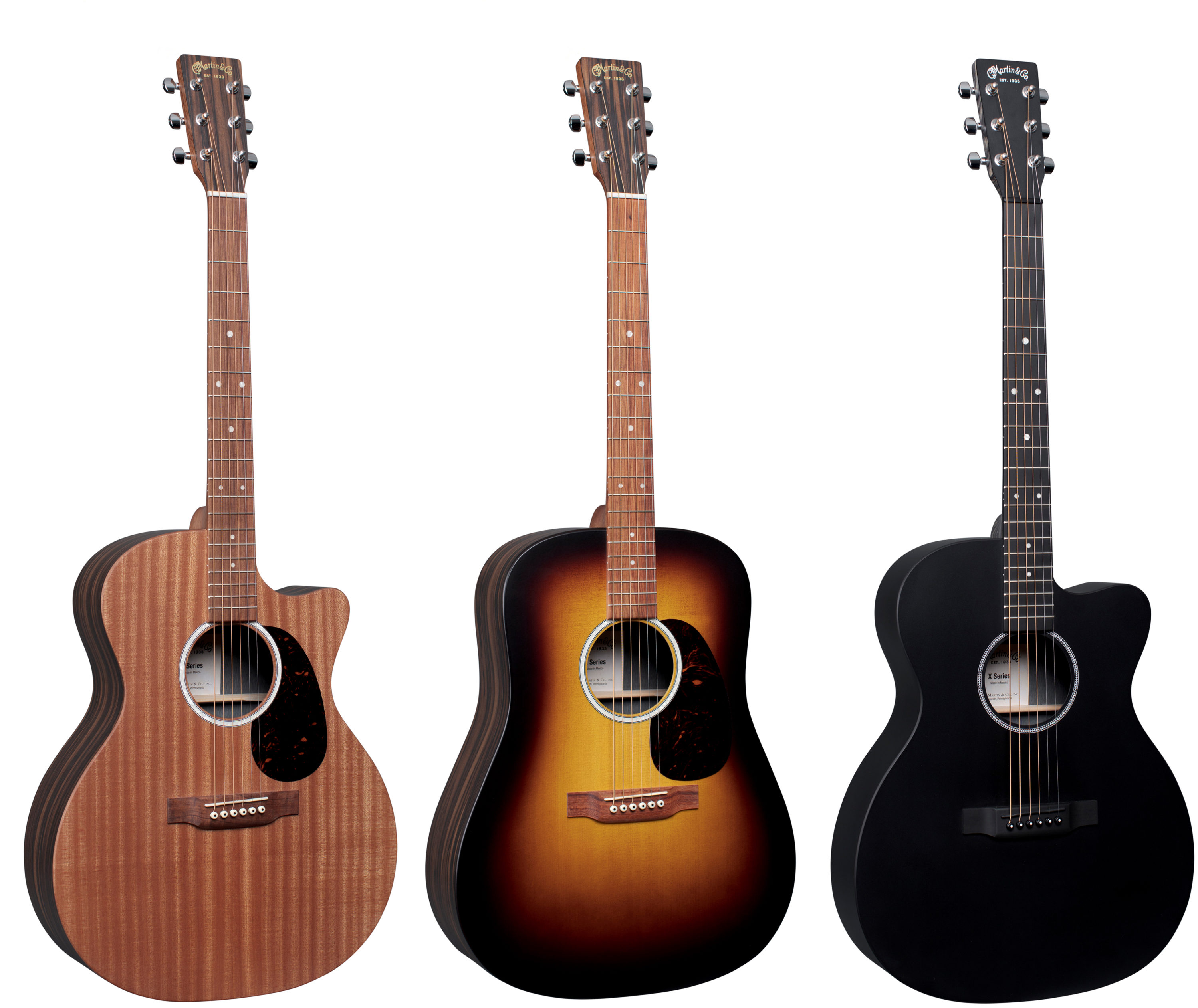
Two decades ago, Martin broke into the world of alternative, sustainable materials and created a whole new class of high-quality guitars called the X Series. Today, with new HPL patterns, scalloped bracing, and a solid wood neck, fingerboard, and bridge, the new X Series guitars look and sound better than ever. Plus, every X Series guitar now comes with a padded, water-resistant gig bag. The new and improved Martin X Series guitars are built to go anywhere, offering beginners and active musicians a carefree playing experience.
Learn more about the MANY new X Series instruments via the links below.
Made with Solid Wood Tops with High Pressure Laminate Backs and Sides
List prices from $799 – $899.
Made with High Pressure Laminate Top, Back, and Sides.
Like this:
Like Loading...






